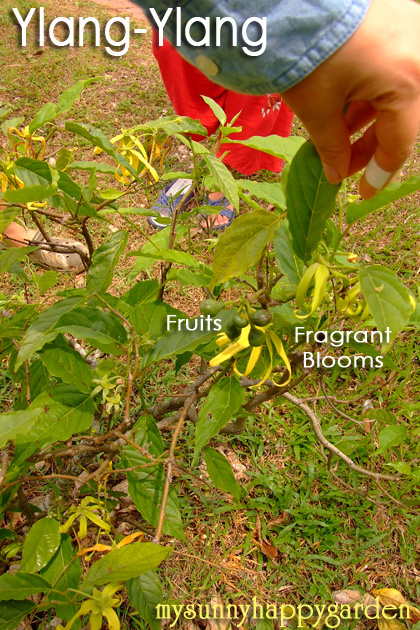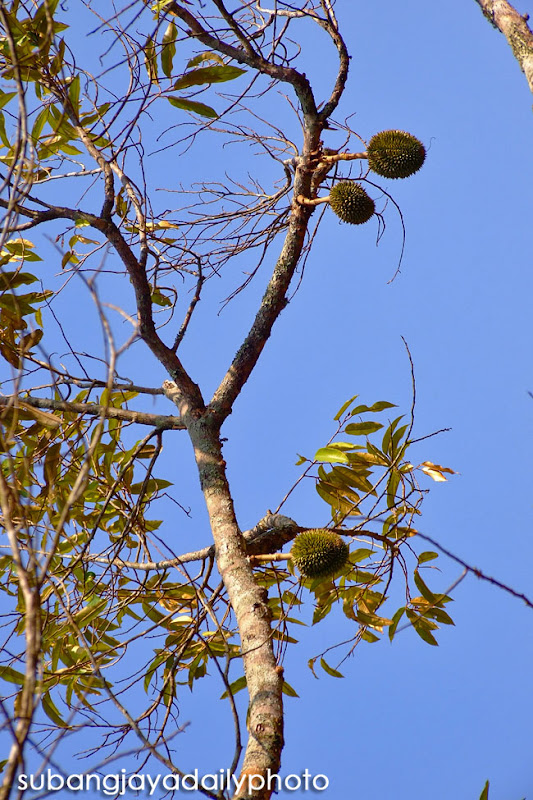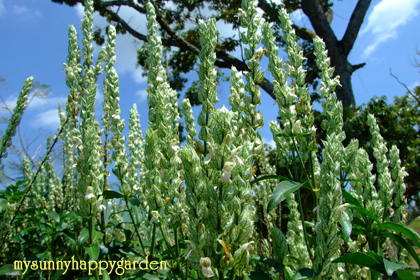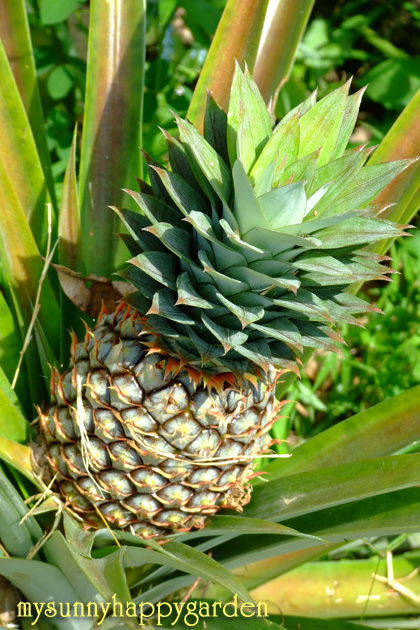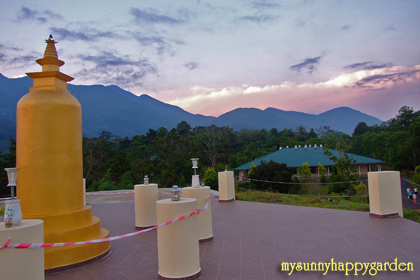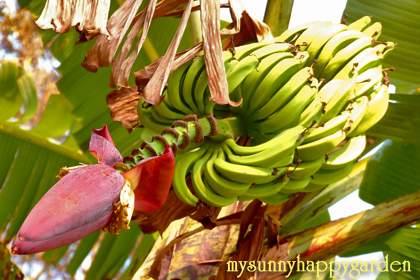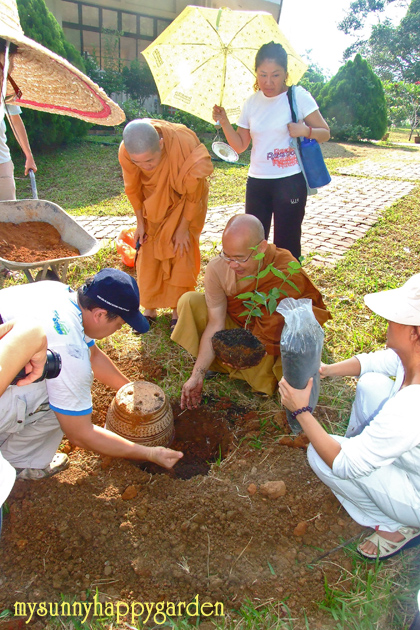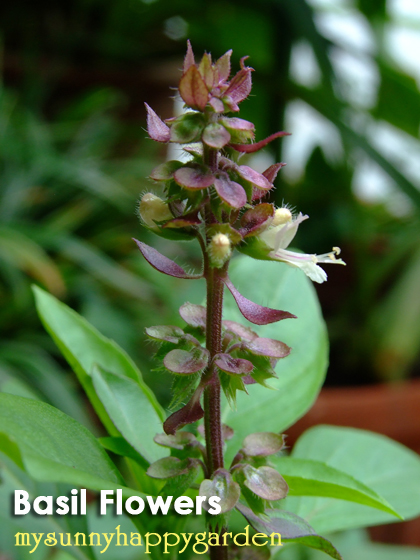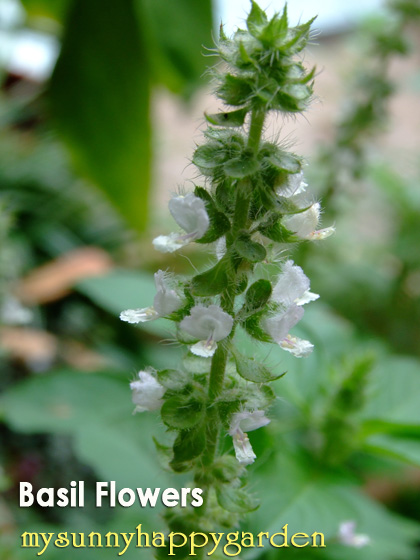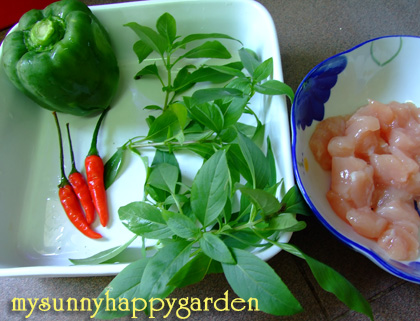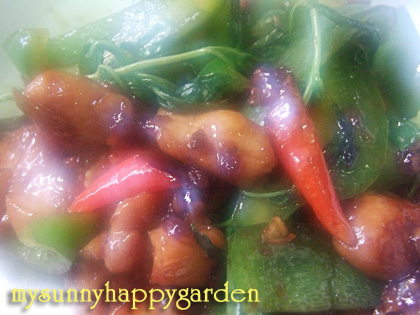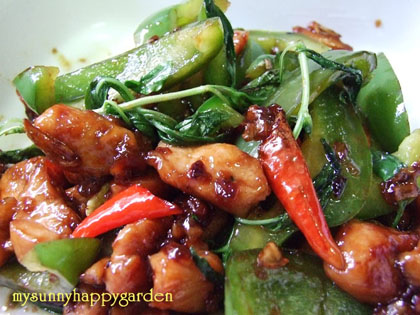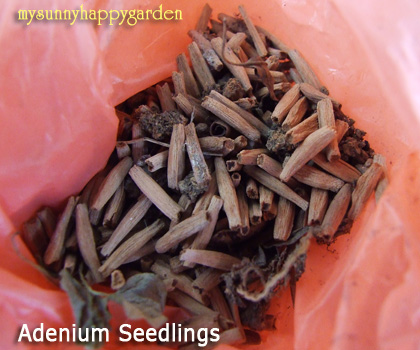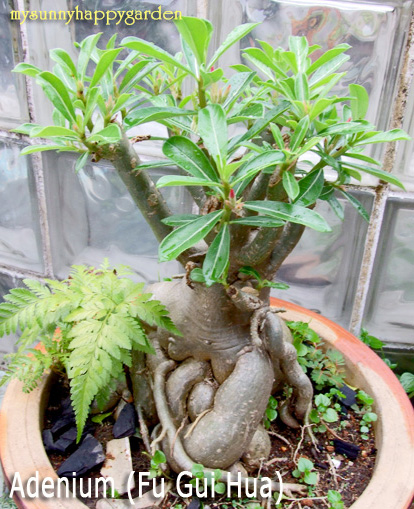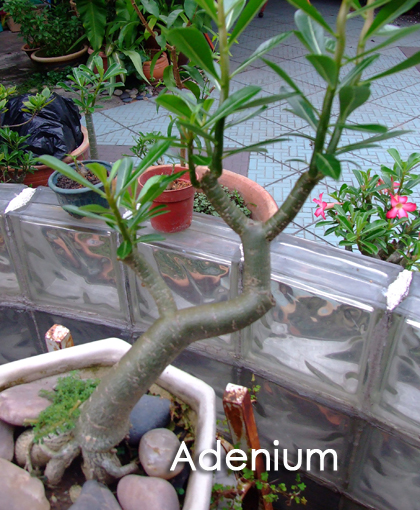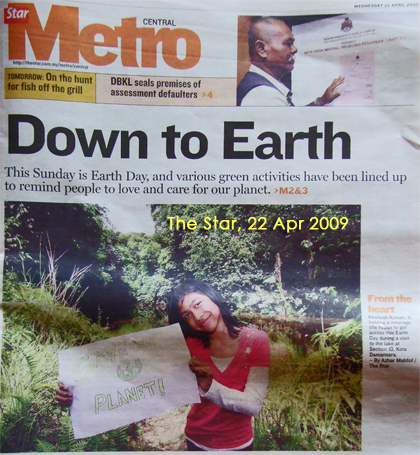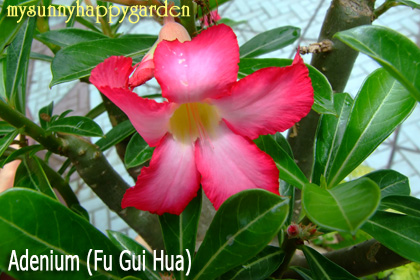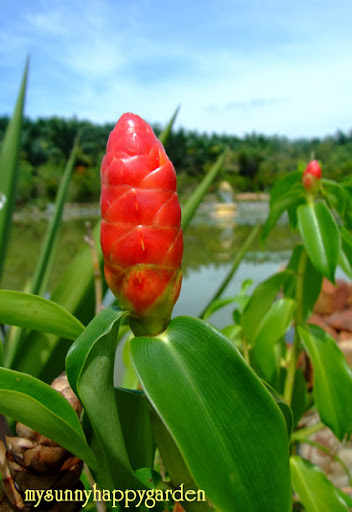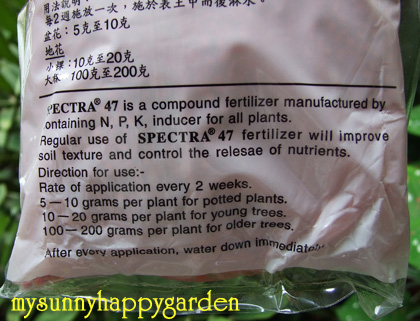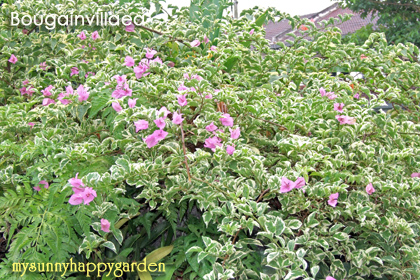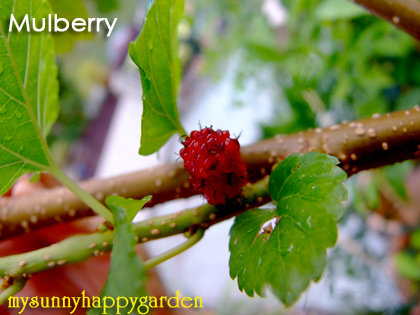I have seen this fragrant yellow flower before but never do I know that it is called Ylang-Ylang (pronounced ee-lang ee-lang)! Yup, this is the flower that is widely used in perfume! The most well-known perfume containing Ylang-Ylang is the world famous Chanel No. 5. Ylang Ylang is also used in other perfumes such as "Aqua De Gio" by Giorgio Armani, "Poison" by Christian Dior, and "Elise Fields" ("Champs Elysee") by Guerlain.
This Ylang-Ylang tree in my photo is a dwarf version that is about 3 feet tall. It is planted by grafting. The tree that was planted from seed was over 30 feet tall. Unfortunately I didn't capture any photo of it. That big Ylang-Ylang tree can be found in the Herbs Garden section of Alokarama.
I brought a stem-cut from this Ylang-Ylang bush home to propagate. But the whole tree dried up. I read online that it is very difficult to grow Ylang-Ylang from stem cutting. Mmmm....sigh.......I should have bought the pot of Ylang-Ylang that I saw at a nursery in Tangkak. We went shopping for plants there. A pot of Ylang-Ylang was only RM6!! Probably I will have to check out the nursery in Sg. Buluh to find this plant. Another item to be added to my fragrant blooms list!
The Ylang-Ylang flower changes color from pale green to lemon yellow. Old flowers have a dark yellow color with brown spots and are about 2" long with narrow petals gracefully hanging down.
In addition to its wonderful fragrance, the plant blooms practically year round. Its branches are entirely covered with clusters of flowers and dark green oval fruits. Ripe fruits have a black color. Ylang-Ylang fruits are not used in foods; however they are quite edible.
Ylang-Ylang features are numerous:
1) it is very fast growing - you'll have a mature tree in no time
Conditions for cultivating Ylang-Ylang:
============================
Light: Provide full sun to ensure better flowering.
Water & Humidity: Water your Ylang-Ylang daily for the first 2-3weeks after you plant it. Then regular sprinkler irrigation will be sufficient. Cananga Odorata is a rainforest tropical tree that thrives best in a high-humidity environment. Average water is needed; water regularly; but do not overwater. Suitable for growing in containers
Fertilization: Fertilize the plant with one-half dose of blooming-grade balanced fertilizer at least once a month during the growth period to encourage blooming.
Pests: The tree is practically pest-free. No special treatments are usually required to keep it healthy.
Soil pH requirements:
5.6 to 6.0 (acidic)
6.1 to 6.5 (mildly acidic)
Propagation Methods:
From herbaceous stem cuttings
From seed; direct sow
Seed Collecting:
Unblemished fruit must be significantly overripe before harvesting seed; clean and dry seeds. Seed does not store well; sow as soon as possible
Other details:
This plant is attractive to bees, butterflies and/or birds.
There is a Philippine legend that tells about a married couple who had everything in their life except children. In a dream, the gods came to them and promised to grant them a daughter, provided that the girl should never touch a man once she matures. The girl was named Ilang ("Flower"). She grew to be a true beauty, and there was no lack of men asking to marry her, but her parents guarded her in order not to break their agreement with the gods.
One day when the parents were not at home, Ilang went to her garden to collect a bouquet of flowers. Unexpectedly, there appeared a young man who for a long time had been in love with her.
He held her by her hand and said, "I love you, be my wife." Instantly the girl disappeared, turning into a small tree with very fragrant flowers. "Ilang! Ilang!" cried the young man. Since that day, it is said that the young man continues to wander in the magic garden, calling out her name throughout eternity.


